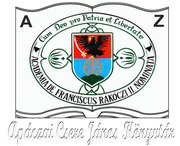Please use this identifier to cite or link to this item:
https://dspace.kmf.uz.ua/jspui/handle/123456789/4639Full metadata record
| DC Field | Value | Language |
|---|---|---|
| dc.contributor.author | Sikora Emőke | hu |
| dc.contributor.author | Katona Kitti Krisztina | hu |
| dc.contributor.author | Muránszky Gábor | hu |
| dc.contributor.author | Bánhidi Olivér | hu |
| dc.contributor.author | Kristály Ferenc | hu |
| dc.contributor.author | T. Szabó József | hu |
| dc.contributor.author | Windisch Márk | hu |
| dc.contributor.author | Fiser Béla | hu |
| dc.contributor.author | Bela Fiser | en |
| dc.contributor.author | Фішер Бейло | uk |
| dc.contributor.author | Vanyorek László | hu |
| dc.date.accessioned | 2025-01-29T12:55:11Z | - |
| dc.date.available | 2025-01-29T12:55:11Z | - |
| dc.date.issued | 2021 | - |
| dc.identifier.citation | In Arabian Journal of Chemistry. 2021. Volume 14., Issue 7. 9 p. | en |
| dc.identifier.issn | 1878-5352 (Print) | - |
| dc.identifier.issn | 1878-5379 (Online) | - |
| dc.identifier.other | DOI: https://doi.org/10.1016/j.arabjc.2021.103202 | - |
| dc.identifier.uri | https://dspace.kmf.uz.ua/jspui/handle/123456789/4639 | - |
| dc.description.abstract | Abstract. The reduction of undesirable chlorate (ClO 3 ) is important from both an environmental and an industrial point of view. In our work, cellulose-based catalysts have been designed for chlorate reduction by using palladium, platinum, and iron oxide. The produced catalysts were characterized by SEM, TEM, XRD, FTIR, and ICP. Even though low precious metal content (<0.6 wt %) was used during the catalyst preparation, high catalytic activity was achieved, and the conversion was as high as 92.5%. Furthermore, a continuous chlorate hydrogenation and monitoring system has also been developed within which the reduction has been carried out successfully and after about 160 min the ClO 3 content has been reduced to zero. | en |
| dc.description.sponsorship | The article was prepared with the professional support of the Doctoral Student Scholarship Program of the Co-operative Doctoral Program of the Ministry of Innovation and Technology financed from the National Research, Development and Innovation Fund. The described article was carried out as part of the EFOP-3.6.1-16-2016-00011 “Younger and Renewing University – Innovative Knowledge City – institutional development of the University of Miskolc aiming at intelligent specialisation” project implemented in the framework of the Szechenyi 2020 program. The realization of this project is supported by the European Union, co-financed by the European Social Fund. | en |
| dc.language.iso | en | en |
| dc.publisher | Elsevier | en |
| dc.relation.ispartofseries | ;Volume 14., Issue 7. | - |
| dc.rights | Attribution-NonCommercial-NoDerivs 3.0 United States | * |
| dc.rights.uri | http://creativecommons.org/licenses/by-nc-nd/3.0/us/ | * |
| dc.subject | Cellulose | en |
| dc.subject | Catalyst | en |
| dc.subject | Chlorate reduction | en |
| dc.subject | Catalytic hydrogenation | en |
| dc.title | Cellulose-based Catalyst Design for Efficient Chlorate Reduction | en |
| dc.type | dc.type.collaborative | en |
| Appears in Collections: | Fiser Béla | |
Files in This Item:
| File | Description | Size | Format | |
|---|---|---|---|---|
| Emoke_et_al_Cellulose_based_catalyst_design_2021.pdf | In Arabian Journal of Chemistry. 2021. Volume 14., Issue 7. 9 p. | 2.08 MB | Adobe PDF | View/Open |
This item is licensed under a Creative Commons License





